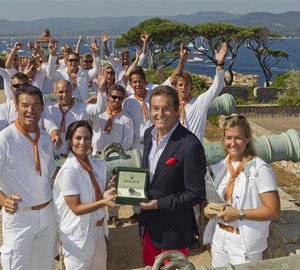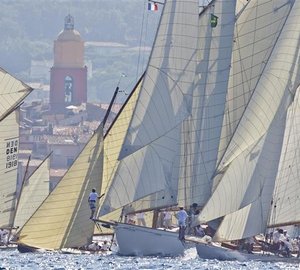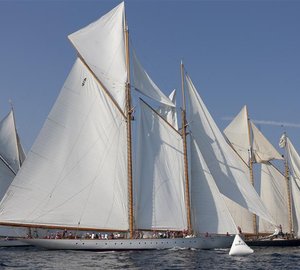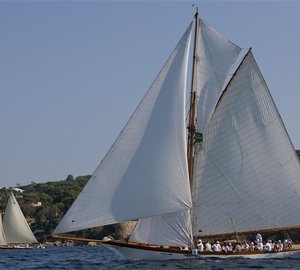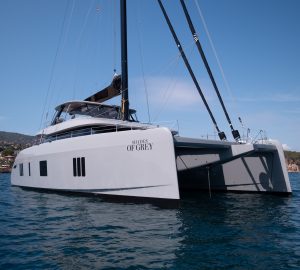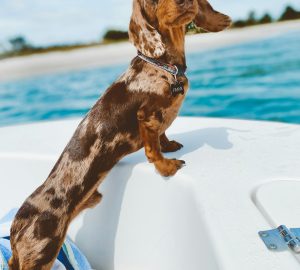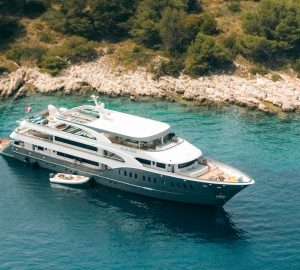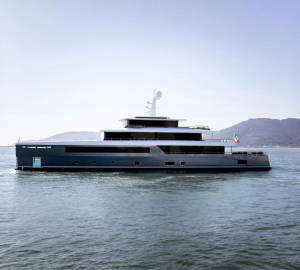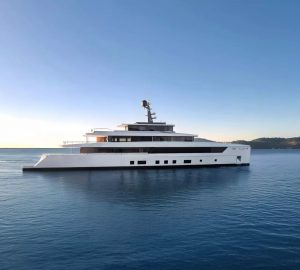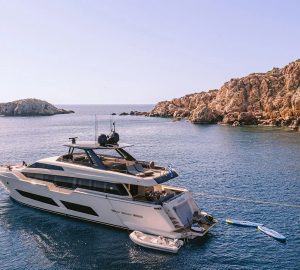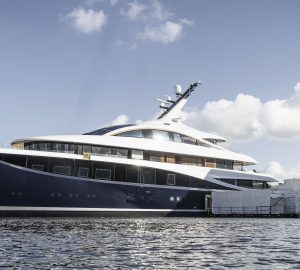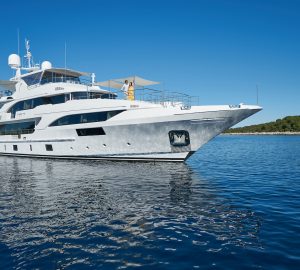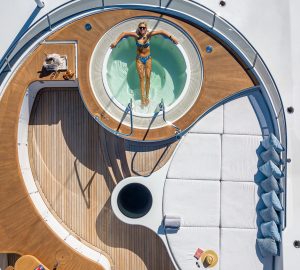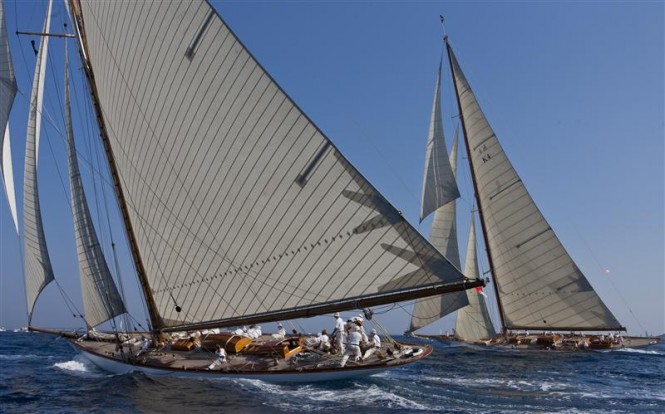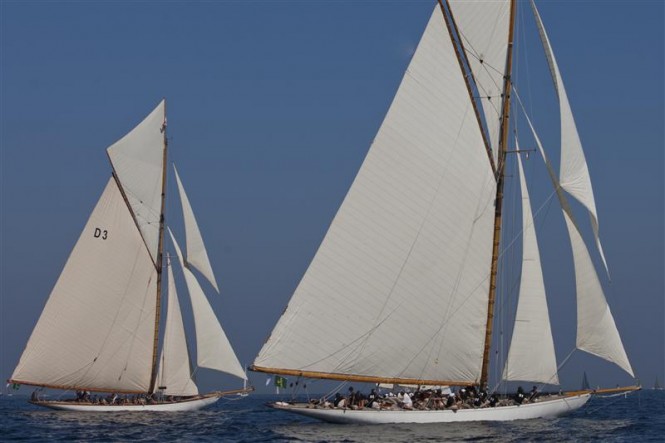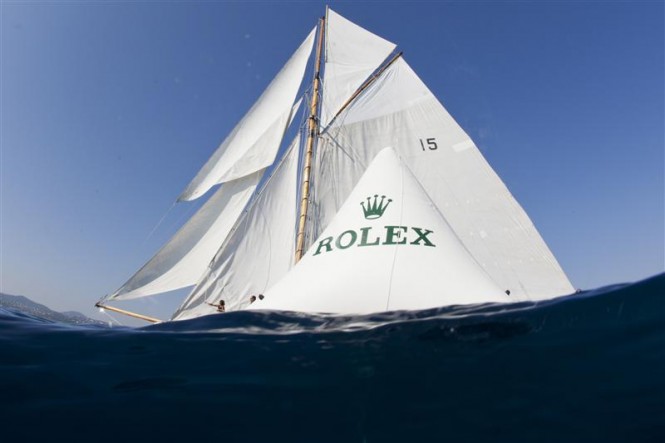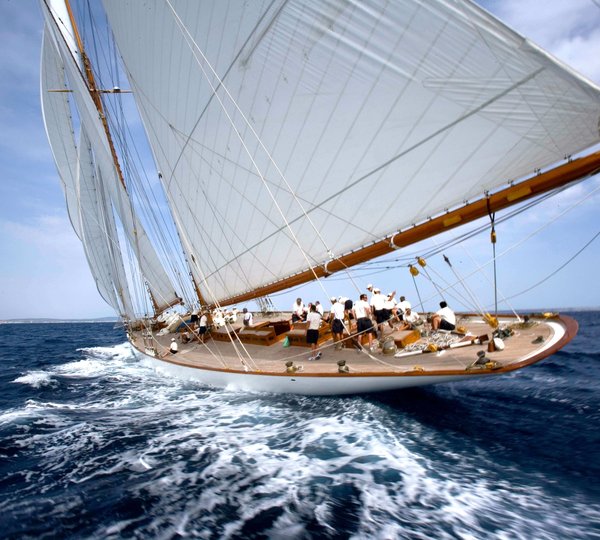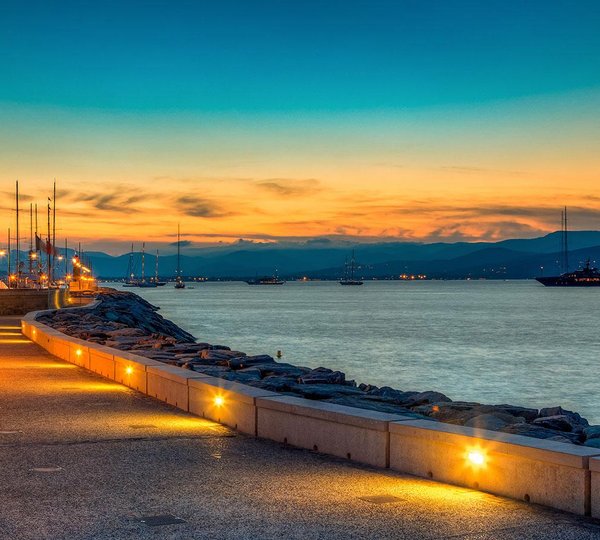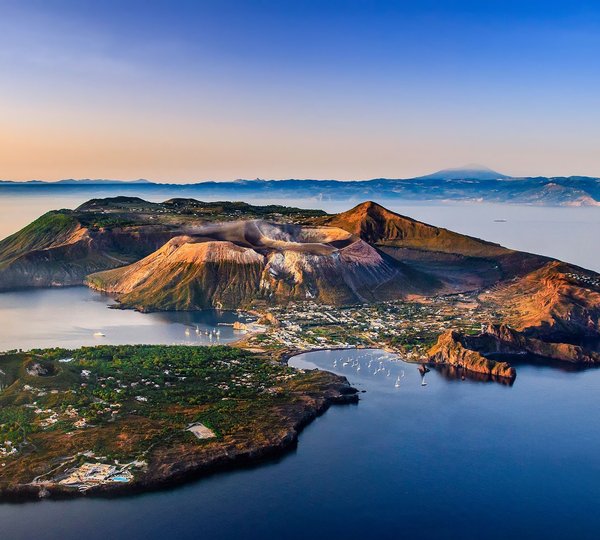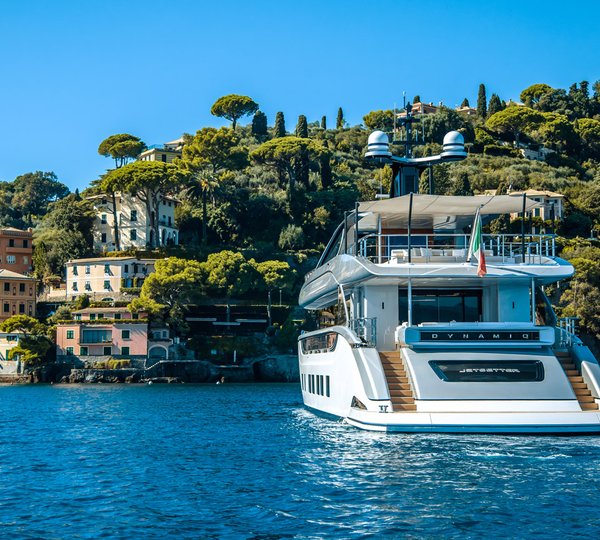Midweek in St Tropez is traditionally a layday for the modern fleet, and sort of a busman’s holiday for the classic fleet. Challenge Day has one ‘featured’ race of the day, and a host of other informal challenges were struck for match races between competitors, solely for bragging rights. This year, the Club 55 Cup match was between 2 superyachts designed by William Fife III – the 140-foot 19 Metre Class, sailing yacht Mariquita and the 128-foot gaff schooner Altair.
Following tradition, the Club 55 Cup race course had a start off St Tropez, from the Tour du Portalet, around La Nioulargue buoy to the finish line off Club 55 on the beach in Pampelonne. After finishing, the crews transfer to the beachside restaurant for lunch, with the losing skipper hosting the drinks.
Racing along with the pair from the “big boat” fleet was the 12metre Ikra, one of the two competitors from the original match race that started La Nioulargue, the predecessor to Les Voiles de Saint-Tropez back in the fall of 1981. The other boat was the Swan 44, Pride, owned by American Dick Jayson. The boat and enthusiastic skipper competed right through 1995, and even returned for the 20th reunion in 2001. Eventually, the family sold the boat about six years ago, and Jayson is now in his late 80s.
Pride was scheduled to be in St Tropez for the 30th anniversary from its new homeport in Sicily, Italy, but was cancelled due to weather. Fortunately, family reinforcements were on hand: son Bill Jayson and his wife, Anne, were in St Tropez to represent the elder Jayson. As were Patrick Almere and Sebastian Le Ber, President of the nearby Yacht Club de Porquerolles, and both local sailors who were part of the original Pride crew.
Bill Jayson, reflecting on his father’s participation said, “Age took its measure and he really was not able to sail competitively anymore, so he stopped. But we have great memories of sailing here with my dad, and the way he made friends with the people here. Patrice de Colmont (from Club 55) was really the person that got things going after the first race. They thought ‘this was so much fun, let’s invite some more boats… and then we’ll invite some more boats’, and it just keep getting bigger and bigger. It was certainly fun to tag along with my father all these years.”
For other boats, both modern and traditional, about a dozen individual challenges were made, with the planned course 6.5 nautical miles. One pair, which showcased the famous American design firm, Sparkman & Stephens, was the match between the yawl-rigs Skylark, 53 feet, and Argyll, 57 feet. Both are great examples of Olin Stephens impeccable eye: Skylark (1937), is owned by Tara Getty, and Argyll (1948) by the Welsh comedian and actor, Griff Rhys Jones.
This years’ Les Voiles marks the debut of Skylark in Mediterranean waters. The boat only arrived in June, having been shipped from Newport, Rhode Island, where it spent the last eight years going through an on again/off again refit. Fortunately, its’ pedigree – a near sister-ship to the well-known Stormy Weather – and condition warranted attention and ultimately an American owner invested the resources to ensure a thorough refit by classic yacht restoration specialists, LMI Newport and East Passage Boatwrights.
Getty owns the impeccable 100-foot motor yacht, Blue Bird, a classic beauty, and he clearly has an eye and appreciation for period yachts. Blue Bird was built in 1938 for Sir Malcolm Campbell, an English racing motorist who held the world speed record on land and on water during the 1920s and 1930s using vehicles called Blue Bird. For the match against Argyll, Getty put up the Blue Bird Cup, a striking sterling silver trophy that was awarded to Campbell in 1938 for setting a land speed record.
No stranger to Les Voiles de Saint-Tropez, Getty raced every year on boats he chartered with friends. Meanwhile, he kept looking for a suitable sailing yacht, one from an era similar to Blue Bird. He searched for two to three years, almost buying another boat that wasn’t quite right, post-war versus pre-war. Getty said, “Sometime last summer I saw Stormy Weather and I thought, ‘Okay, now I know what I’m looking for’.”
Having only taken delivery of Skylark in June, Getty and family spent July and August cruising in Corsica with Blue Bird and enjoying day sailing on his new S&S yawl. He said, “For me, she’s a perfect size, because if she’s too small, I can’t really have crew living on her comfortably, and if she’s too big she becomes too much of a hassle to sail – like the big gaffers who needs lots of crew. I want minimum crew, so if we go away you only need one person onboard and that’s it.
“So it’s very difficult to find the right boat for that if you’re looking at vintage boats, but quite difficult to tick all the boxes. So far we’ve been quite lucky, the test will be to see how well she’ll race, because as a cruising boat, she’s worked wonderfully – every day we’ve gone out for a couple of hours and have had some lovely, lovely sails.”
Given that this is Skylark’s first regatta this year, the results seem less important than the joy in finding such a gem, Getty adds, “We have a really strong crew and none of us are really professionals: friends, and friends of friends, and my family. I don’t want to do a full professional thing, it’s not what we’re gunning for. This is our first event this year and it’s wonderful to finally be doing it on your own boat, even though Skylark is not very big compared to some of the boats we’ve been sailing on. This is her first time in Europe, so it must be causing a bit of interest because it’s another Sparkman & Stephens come over (from the US), very similar to Stormy Weather, Dorade, and Sonny…the famous ones. She’s not been seen in Europe.”
The race between Skylark and Argyll was closely fought in the fickle breeze. While Skylark led most of the way around the course, Rhys Jones and his crew on Argyll picked the shifts well, managing to sail into more breeze on the last leg and finished in front of Argyll to win the Blue Bird Cup.
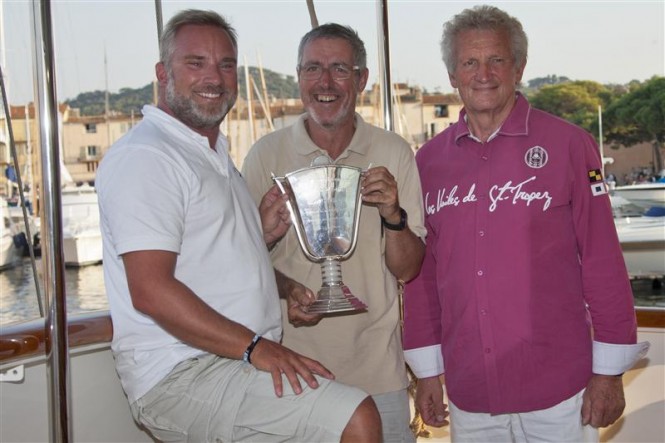
Tara Getty (SKYLARK), Griff Rhys Jones (ARGYLL) and André Beaufils with the Blue Bird Cup for their challenge match race Photo By Rolex Carlo Borlenghi
New this year was the Centenary Trophy, a race for traditional boats over one hundred years old (built prior to 29 October 1911), hosted by the Gstaad Yacht Club. With the very light southeasterly breeze over the gulf of St Tropez, the course was eventually shortened, with 15 boats managing to finish. Placing first overall was the 44-foot Bonafide, a “5 tonner” class originally built in 1899, then rebuilt and relaunched in 2003.
At Les Voiles de Saint-Tropez, the Rolex Trophy is a competition within the tradition/classic classes for all boats 16 metres and longer on deck. The winning boat will receive the Rolex Trophy and a Rolex timepiece. First awarded in 2006, this year over 50 boats are eligible. The winner from 2010, Yves-Marie Morault, on the 12-metre Ikra, is back to defend.
Racing continues Friday and Saturday for both Traditional and Modern classes. First warning signal is 1100 for the Moderns, 1200 for Traditional. On Sunday the final Prizgiving ceremony will be held at La Citadelle, the 16th century fortress overlooking the Golfe de Saint-Tropez.
Les Voiles de Saint-Tropez 2011 Event Programme
Sunday, 25 September: Welcome for Modern yachts
Monday, 26 September: Welcome for Traditional yachts; Racing for Modern yachts
Tuesday, 27 September: Modern and Traditional yacht racing
Wednesday, 28 September: Modern and Traditional yacht racing
Thursday, 29 September: Challenge Day (match racing); Club 55 Cup between Mariquita & Altair; Centenary Trophy (yachts over 100 years old)
Friday, 30 September: Modern and Traditional yacht racing
Saturday, 1 October: Modern and Traditional yacht racing
Sunday, 2 October: 11am, Prizegiving Ceremony at La Citadelle

